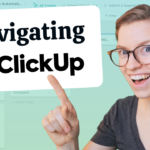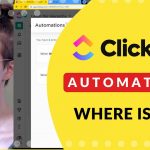This post contains affiliate links or sponsored content for which we may receive compensation. For details, visit https://processdriven.co/terms
EOS, the Entrepreneurial Operating System®, is a set of simple concepts and practical tools that thousands of entrepreneurs worldwide employ to stay organized and focused on achieving their business goals. Like any complex system, a platform is beneficial for administering and maintaining the processes involved. It often leaves owners wondering which is the right Entrepreneurial Operating System software to use for their business.
ProcessDriven CEO and Process Consultant Layla Pomper has worked with over 1700 teams to implement work management software and systemize their businesses. In today’s video, Layla demonstrates why SmartSuite is the…ahem, smart alternative to dedicated EOS software. But, first…
What is the Entrepreneurial Operating System?
EOS is an operating system for people. Like a computer operating system is made up of rule-driven processes, EOS is a framework that guides leaders and their teams to work towards shared goals. It emphasizes these key areas:
- Vision – Translating leadership’s vision into achievable goals and milestones for reaching them.
- People – Placing and supporting the right employees in the best roles.
- Data – Tracking key metrics and performance.
- Issues – Identifying challenges and implementing practical solutions.
- Process – Developing processes for efficiency and productivity.
- Traction – Progress and momentum achieved through synergy.
EOS Software Challenges
There are dedicated software solutions created specifically for companies running EOS. However, many small business owners find them overly complex, require extensive data entry, and are slow to realize results. Even worse, as a self-contained system, this software creates information silos, stunting collaboration and preventing teams from accessing valuable data and resources.
Watch the full video and discover why SmartSuite is a viable substitute for Entrepreneurial Operating System software and for a simple tutorial on streamlining EOS administration and maintenance using Templates, Automations, and Linked Record Fields.
Want to follow along with Layla? Create your free SmartSuite account using our affiliate link to help support the creation of this and other ProcessDriven tutorials.
Not a video person? Short on time? Read on for a quick summary, and use the timestamps to jump to specific tutorial sections.
Simplifying EOS Creation with SmartSuite Templates
SmartSuite has a Template for just about every process, and EOS is no exception. It’s an excellent starting point for implementation, with auto-created databases and content specific to the Entrepreneurial Operating System.
How to Load the SmartSuite EOS Template (timestamp 02:50)
- Choose Add a New Solution from My Workspace (SmartSuite Home).
- Select Start with Template from the drop-down.
- Type EOS in the search bar.
- Locate the EOS Program Template in the Results window and click Use Template.
Once the Template is loaded, you can edit and customize the various Fields. Refer to the video to see a few changes Layla made to the initial Template.
You’ll see that EOS Program is our top-level Solution, and multiple Apps are available below. These include VTO, 1-Year Plan, 90-Day Plans, L10 Meetings, Scorecard, Rocks, and IDS.
Each App corresponds directly to a vital EOS area.
Here’s a quick overview of each section and its role in administering and maintaining EOS:
VTO – Vision/Traction Organizer (timestamp 03:35)
VTO is our first App and contains the company’s highest-level information. Using a variety of Field types like Sub Items and SmartDocs, it’s formatted to include sections for the company’s Core Values, Mission, 3-Year Picture, and overall Marketing Strategy. You can edit and rearrange these Fields, add new ones, or delete unnecessary areas as desired.
Pro Tip: Edit Field Settings and enter Default Text with your desired formatting or add EOS prompts to pre-populate New Records and reduce data entry time!
1-Year Plan (timestamp 06:10)
Each Record here represents a one-year block of planning. In the video, you’ll see a section for the overall company plan and one for each department’s annual plan below. Like the VTO Records above, you can add, edit, and remove sections or Fields to suit your company’s needs.
90-Day Plans (timestamp 07:40)
90-Day Plans show where our goals fit in a more immediate timeframe. Each row, or Record, is a quarterly planning period. Using Linked Records and Relationship Fields from the Scorecard and Rocks Apps, you can easily organize and track VTO goal progress.
L10 Meetings (timestamp 09:15)
The first three Apps help define our vision and goals, providing valuable summaries of plans and progress. Now we need to drill down further into problem-solving and teamwork. One significant benefit of using SmartSuite instead of EOS-specific software is the platform’s enhanced collaboration tools.
A New Record in this App creates a pre-populated and formatted L10 Meeting-ready agenda. Using Linked Records from the IDS App, leadership and team members can create and add discussion items as they arise to relevant agendas and assign ownership, tasks, deadlines, and more. This eliminates the need to “remember to bring this up in the next meeting.” Team members are secure that the issue is logged and will be addressed.
IDS (timestamp 12:15)
IDS stands for Identify, Discuss, and Solve. Here team members can create and track company-wide or departmental challenges or roadblocks and add them to L10 Meeting agendas for discussion.
Pro Tip: Because SmartSuite wasn’t built purely for EOS, you can plan and track all business areas and processes here, allowing you to integrate data from those Solutions into your EOS.
For example, if you use a separate SmartSuite Solution for Marketing Campaigns or Help Desk, you can create relationships with IDS items, Scorecard data, and other information to dynamically populate your EOS Apps, like the L10 Meeting Agenda. Because everything is in one place and can be linked together, there’s no need to shuffle through multiple file directories and drives or log into different software to find the necessary information.
Rocks (timestamp 15:25)
Rocks is EOS terminology for concrete, attainable goals. In this App, Rocks are categorized by company-wide and departmental goals. This makes it easy to view all Rocks and their statuses in one place. You can use the Spotlight feature to automatically highlight areas that are off-track (timestamp 16:20).
Pro Tip: Connect Rocks to Tasks (timestamp 18:15) to provide employees with a high-level view of tactical activities. Use Linked Record Fields to showcase how each Task Record relates to VTO and Rocks, so employees understand why each activity matters and what part it plays in overall company goals.
Scorecard (timestamp 18:55)
The Scorecard is a linked database that utilizes all App information to track vital areas and provide a quick look at VTO progress and key metrics. These Records define the main metrics we want to follow and associate details like Departments, Owners, Current Status, and Target Goals. This information helps populate other Apps. For example, the Scorecard Summary appears in 90-Day Plans. When a team member enters new data into the Scorecard Record, linked areas dynamically update across the Solution.
Pro Tip: If the spreadsheet-like grid view isn’t your thing, SmartSuite offers a plethora of Views to choose from, like Card, Timeline, Calendar, Chart, and Map.
This video shows what you can accomplish with just a little work on SmartSuite’s stock EOS template. However, suppose you want to push things further. In that case, you can create custom Dashboards and add Automations, such as one that generates a weekly report on Scorecard or Rock status for senior leadership.
Information silos can destroy synergy and stall healthy growth by duplicating efforts, squandering resources, and utilizing incompatible systems. When you consolidate your workflows, including EOS, in SmartSuite, you can replace traditional Entrepreneurial Operating System software and remove roadblocks preventing teams from reaching their full potential.
Did you know that you can access the EOS Template and follow along with the tutorial with a free SmartSuite account? Use our affiliate link to sign up now!
We hope you enjoyed learning how to organize your Entrepreneurial Operating System inside SmartSuite. Check out our entire library of free tutorial content on the ProcessDriven YouTube channel.
Ready to transform the way you create and manage SOPs? Unlock your FREE SmartSuite SOP Template and embark on a smooth documentation journey today! 👌
ProcessDriven helps small teams turn chaos into process. The ProcessDriven Approach™️ combines software expertise with practical process-first strategies that have helped 1,600+ teams build a scalable foundation of business systems.





